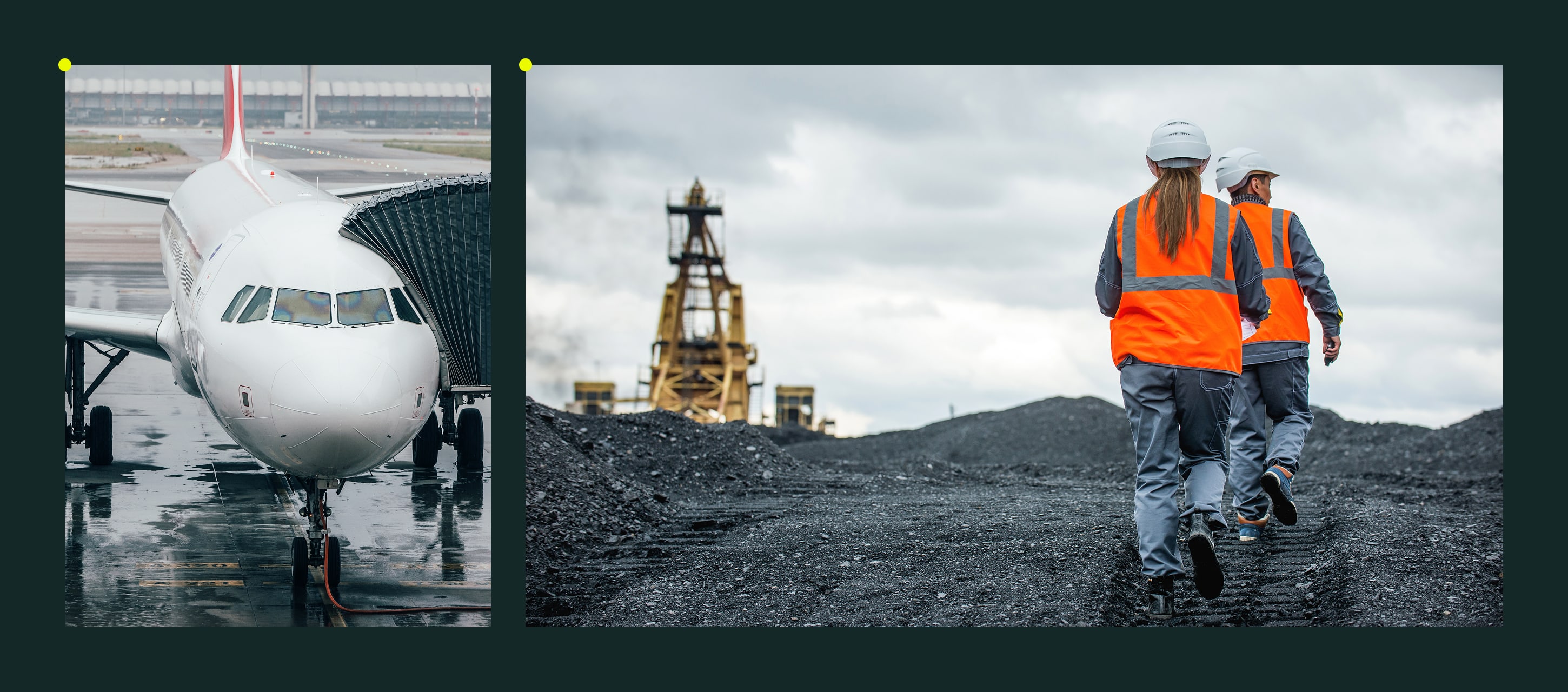In 2024, $1.7 billion in Environment Protection Agency (EPA) fines. In 2023, $4.9 billion in workplace health and safety costs across New Zealand.
That’s the price of ignoring risk. And that’s before you count the lawsuits, shutdowns, and PR nightmares.
So how do you keep your business out of the headlines (and the courtroom)? Let’s talk about it.
Contents:
What Happens When Compliance Goes Wrong
In high-risk industries, small compliance failures don’t stay small for long. Ignore them, and the consequences add up fast.
Some businesses learnt it the hard way.
Financial Penalties & Legal Risks
The FIU pedestrian bridge collapse in Florida is a clear example of how costly compliance oversights can be. A textbook case of what happens when teams ignore warning signs. Crews spotted cracks. They kept working anyway. Then the bridge collapsed, killing six people.
Investigators later found clear warning signs had been ignored, and serious design flaws had been overlooked. Lawsuits followed, leading to a $102.7 million settlement for victims and their families.
Project Delays & Operational Shutdown
Snowy 2.0, a $12 billion hydro project in Australia, ground to a halt in early 2025 after workers raised concerns about emergency safety protections. With work on hold, costs keep climbing, delays keep piling up, and getting back on schedule gets harder every day.
Reputation Damage & Loss of Trust
The Grenfell Tower disaster exposed serious safety failures, and the final inquiry report directly named multiple companies as responsible.
The UK government cut ties with firms linked to the fire, including cladding and insulation manufacturers Arconic, Kingspan, and Celotex. The Royal Borough of Kensington and Chelsea also banned them from all future projects.
Increased Safety Risks & Liability
The Boeing 737 Max crisis showed us what happens when companies gamble with safety. In 2018 and 2019, two crashes killed 346 people because of a flawed flight control system that shouldn’t have made it past testing. Boeing downplayed the risks, pushed approvals through, and ignored concerns.
The fallout was massive: a global grounding of the aircraft, billions in legal settlements, and intense scrutiny of the company’s manufacturing practices. And in 2024, new safety issues triggered another round of FAA investigations and aircraft removals from service.
Can You Avoid All the Above?
We’re not here to tell you accidents will never happen. They will.
But there’s a difference between being caught off guard and being ready to act.
Having served field service teams for 10 years, we at Fluix can tell what the companies that come out on top do the right way. They automate compliance, run regular audits, and train their teams like lives depend on it. Because they do.
You can do the same.
Automate the Compliance Process
Relying on manual processes is a recipe for many problems. And while 100% digitalization can be overwhelming, automating even key workflows – like approvals, safety checks, and inspections – will give you a huge advantage on its own.
Brendan Tilling, Project Proposals Engineer at MULTIVAC (who reduced quote turnaround time by 200% with automation), knows the impact:
“As a project proposals engineer, I spend a lot of time talking with suppliers and design teams, so any time I can gain with automation is time I would not otherwise have.”
Your Action Plan:
- Use mobile forms for inspections & safety checks. Select a platform like Fluix, FastField or GoCanvas to replace paper-based forms.
- Create a standardized template for safety inspections, incident reports, and audits.
- Include mandatory fields to ensure compliance (e.g., date, location, technician’s signature, hazard classification).
- Use conditional logic to display only relevant sections (e.g., show corrective action steps only if an issue is flagged).
- Pre-fill standard fields to save time (e.g., technician name, location, asset details).
- Use dropdowns, checkboxes, and photo uploads to minimize typing errors.
- Configure mobile forms to trigger instant alerts to supervisors when safety hazards or failed inspections are reported.
- Automate approvals. Map out the approval steps, ensure each step has a designated approver, and configure alerts to prompt action when approvals are needed.
- Use digital audit trails. Capture every inspection, finding, and corrective action in a centralized system.
- Act on findings. Categorize issues by risk level and set clear deadlines for corrective actions.
- Streamline document routing for instant access. Store all compliance reports in a cloud-based system, keeping a complete history of all document actions.
Keep in mind that automating approvals only works if you map out your workflows clearly – by defining who approves what at each stage.
Which means that before actually automating, a good exercise will be to sit down and map out the process on paper or in a Google Doc – see who is involved, what forms participate, and what action is needed at each stage.
Read More Read More Ten best tools for digital checklists that will help you with compliance automation
Prioritize Safety in the First Place
This advice should come first actually. Because no matter how advanced your tools are, if safety isn’t solid on-site, your reports (even if digital) won’t be looking good.
Iryna Vorona, Senior Customer Success Manager at Fluix, has seen it happen firsthand:
“I’ve worked with construction teams that felt confident in their processes, until an audit flagged gaps they didn’t even realize were there. Don’t trust the process without testing it.”
Safety isn’t something that is built in one month or even a year. But steps are the same no matter your current stage.
Your Action Plan:
- Make safety talks a habit. Before every shift, gather teams for a quick safety talk. Highlight job-specific risks, review past incidents, and reinforce best practices. Here is a list of 100 safety talks, and you can start from it.
- Train, and then train again. Schedule regular sessions to keep workers updated on protocols and regulatory changes. Use platforms like Fluix or SafetyCulture to digitize training records and track completion rates effortlessly.
- Lead by example. Supervisors and managers set the tone. Follow safety procedures, wear required PPE, and actively reinforce compliance expectations.
- Build a culture of reporting. Set up a non-punitive system where workers can easily flag hazards and near misses. Offer anonymous reporting options and, most importantly, act on every report.
Final Thoughts
Regulations aren’t going anywhere—in fact, new ones will likely emerge as concerns around sustainability, AI tools, data privacy, and ethics continue to grow. That means more documents to complete and more reports to submit.
If you haven’t already, now is the time to invest in compliance automation and lay the foundation for a streamlined, stress-free process. At Fluix, we’ve helped hundreds of companies do just that over the past 10 years—and we’d be happy to do the same for you.





